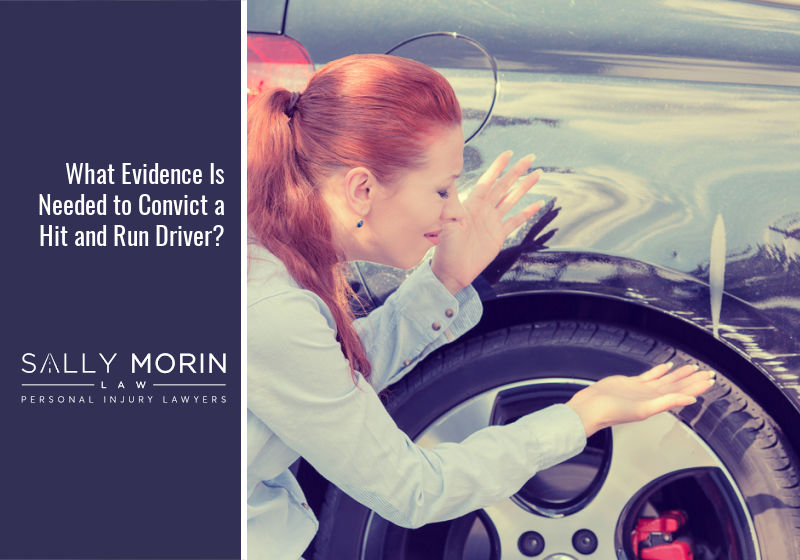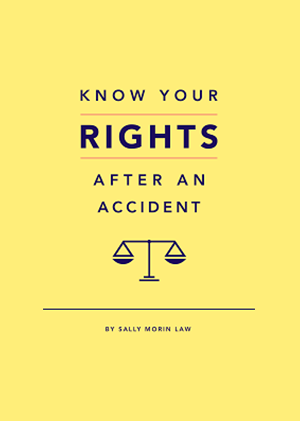California has the nation’s largest share of fatal hit-and-run accidents. Our state also has a hit-and-run death rate that increased by 44% over a decade.
It’s frightening to consider what would happen if someone hit you, hurt you, and fled. When you’re the victim of a hit-and-run driver, you’re left reeling from the crash and wondering what you can do to find them and hold them accountable.
What Is Considered a Hit and Run in California?
A hit-and-run typically happens when one of the drivers in a minor to severe car accident flees immediately after the crash. The police haven’t even had a chance to arrive at the scene, but the driver decides to run away to avoid the fallout from the crash.
Hit-and-run drivers sometimes try to explain away their actions by saying they don’t want to interact with the police or were feeling too scared to stay. They may also be avoiding a test for alcohol or drug intoxication, or don’t want to be taken into custody on an outstanding warrant. Whatever their explanation, it’s never enough to justify breaking the law.
Leaving the scene of an accident is a criminal act under California Penal Code §20001. The law requires drivers in car accidents to remain at the scene and provide identifying information. This is particularly important when someone has been injured or killed and needs the other driver to call 911 for emergency assistance.
Failing to remain at the scene of an accident can be charged as a misdemeanor or felony in California. If someone is convicted of a misdemeanor hit-and-run, they could be sentenced to 6 months in jail and a $1,000 fine. A felony hit-and-run brings 90 days to one year in jail, plus a fine between $1,000 and $10,000 depending on the circumstances.
What Evidence Is Needed to Convict a Hit and Run Driver?
A hit-and-run car accident often involves both a criminal case and a civil case. In a criminal case, the police and county prosecutor investigate the hit-and-run to determine what types of charges may apply. It’s their role to track down the suspect and handle the criminal investigation.
In a civil case, an injured person asserts their legal right to pursue the liable driver for car accident compensation with the help of a personal injury lawyer. This type of civil case isn’t about sending the hit-and-run driver to jail. Instead, it’s a way of reimbursing the injured person for the devastating damage to their life, body, and financial stability.
Criminal cases and civil cases have separate standards of evidence, but the types of evidence are usually very similar.
Here are some common types of evidence in hit-and-run car accident cases:
- Photos and videos from the scene of the crash
- Paint evidence on the vehicle bodies and nearby objects
- Skidmark evidence from the tires on the roadway
- Eyewitness testimony
- Police and first responder testimony
- Expert witnesses
- Medical records and bills
- Employer evidence of lost wages
- A journal of the victim’s recovery period
In addition to these types of evidence, there are also various methods of evidence-gathering. Some are available to a police officer or another authority in a way they’re not available to the average person.
For example, if a hit-and-run driver is located shortly after the accident and is suspected of driving under the influence, the police can give them a breathalyzer test. But, as an injured victim, you can’t run after a suspect, grab them, and breathalyze them.
Similarly, paint evidence in hit and run cases is often crucial to clarifying liability. The other person’s car might have paint streaks and marks showing exactly how they hit you. However, it’s sometimes difficult to preserve this evidence, especially if you’re dealing with a hit-and-run driver. Maybe an ambulance whisked you away before you could save any evidence!
This is why having a personal injury lawyer on your side is so helpful. Your lawyer can use their experience plus the power of the law to gain access to documentation, videos, photos, tests, public records, and many other types of evidence you might not otherwise be able to find.
We Can Help You Gather Hit and Run Evidence
Compelling evidence can make or break your case. Even if the other driver fled the scene of your accident, don’t worry! There could be plenty of evidence from nearby security cameras, dash cams, local businesses, homeowners, and more.
When you need to know what evidence is needed to convict a hit and run, or if you want to prove someone hurt you, turn to the attorney team at Sally Morin Personal Injury Lawyers. We have experience with California hit-and-runs and help our clients find the evidence needed to prove hit and run cases.
We handle many areas of personal injury law, including challenging hit-and-runs on California’s roads. We believe you should be able to focus on recovering from your accident while we handle the legal details. Call 877-380-8852 today for a free case evaluation.











